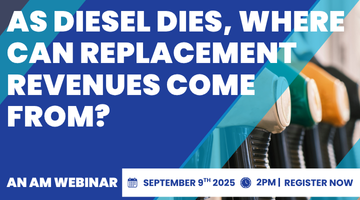BDO attended the latest National Automobile Dealers' Association in the US.
The second of its reports focuses on ensuring maximum value is gained from the used car department, with five essential strategies, from Tommy Gibbs of Tommy Gibbs & Associates.
Gibbs began the seminar by stating that the used car department is the key to doing new car volume.
However the fact is that most used car managers are trained by previous used car managers and local traders.
With this level of training we are expecting them to manage millions of pounds of stock.
How many cars struggle to make gross on vehicles aged > 60 days old.
It is likely the grossed on 45-60 days will also pull the average down. Have you analysed the grosses you make on vehicles sold within 20 days compared to a 45 day old car?
In the US in 2014 42 million used vehicles were sold. This was split between franchised dealers 15.6m, independent traders 13.9m and private sales 12.5m units.
The question must be where the independents get their stock from.
The answer is the franchised dealers.
Are we missing out on retail opportunities?
In addition, once we trade these cars to the dealers we then go to auction to buy more used cars. Is this right?
Do you ever review what you sell in 10, 20, 30 or 40 days of it being is stock. Is there a standard profile of what sells quickly and at the best margin.
There are three types of stock:
1. Fast moving
2. Slow moving
3. Dead stock
You need to identify which category your stocks fall into and action appropriately.
Why don’t used cars sell?
Either you have brought them at the wrong price or you have priced them wrong.
Dealers tend to price them based on what their cost was rather than what is the correct price.
You should also consider are you buying for demand or for supply?
Salesmen need to be aware that they are turning money and not just turning cars. Your entire team needs to understand this.
From this calculate your return on investment.
In summary if you have lots of money in a car you need to turn it quickly.

You should consider reviewing the used cars you have sold over the past couple of years. Similarly down load information from the internet to see what are the hottest models in your market. This will influence your used car strategy.
A simple fact is that the stronger you get in used cars the stronger you will become in new cars.
60%-65% of every deal is a trade in and the used car managers are managing millions of £’s of stock, you need to ensure these managers are adequately trained and are not just trained by other managers in the dealership.
The ageing profile of used cars is critical and having lots of cars greater than 60 days old is like having a noose around your head.
Gibbs identified five strategies to follow:
1. Roll money roll
This is to ensure the sales managers are aware they are managing cash as well as stocks. The reality in the US is that the retail price of new and used vehicles in the US are increasing however the grosses are reducing.
You need to act almost as a daily trader, the shorter time you hold the stocks the more profit you will be likely to make.
You should review the Gross Return on Investments and you should aim for between 100%-120%.
Calculate your average cost per unit sold on a monthly basis.
Then ask yourself what can you do to press this cost down?
The more you press this down the better off you will be.
You will sell more volume and achieve higher gross margins.
2. Attack the 10 most expensive cars
Get aggressive with the most expensive cars and attack them daily.
Give details of these cars to each manager and price them up to sell as you want maximum urgency to get them sold.
Consider putting staff bonus money on the car to get them sold.
3. Life cycle management
From acquisition to being on the forecourt should be less than three days, however they should be on the internet with good quality photos immediately.
It is important to note not every car should have a 60 day cycle.
In some cases you should consider shorter periods i.e. 20 days especially when you purchased a car to make a deal happen, or the model has poor previous sales history, bad colour or you have no experience of the car, bad service history or potentially large repair bill.
If you have a 60 day policy the most important point to consider is how many days are left in the cycle.
Not all cars should have a 60 day cycle and you should assign them different profiles i.e. early warning radar – 20 days, purchase cars 30 days, trade in cars 45 days.
The impact of poor life cycle management is slow turn of stock, ageing issues, poor ROI, bad attitudes and ability to trade in the deal.
4. Sets and subsets
A unique way to drive customers to your dealership.
Consider having three types of sets:
Set
Same make and model not necessarily the same year
Combo set
Similar cars with equal desirability
Subset
A set with non-desirable cars but a profit maker
5. Maximise the impact of the internet
80% of people look for a used car on the internet.
You need to track your GAP (give away profit). This is the difference between your internet price and your transaction
price.
The best used car dealers have prices on the internet that match prices on the vehicles on the forecourt.
Finally should dealers be re-thinking their pay plans? Should dealers consider paying bonuses based upon days in stock and discounts given on the sale and move away from the gross margin.
Key learning points
Consider each of the five strategies and what would work best for your dealership.
Stock = cash, maximise it to your best advantage.
Have intolerance to ageing and consider different ageing policies for type of vehicles.
Consider pay plans













Login to comment
Comments
No comments have been made yet.